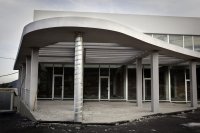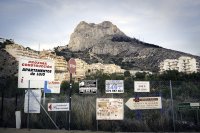



















According to the chronicles, in early 21st Century the Spanish housing market went through an exceptional period of economic growth. Historians often refer to this period as the Bonánzico. Land was owned and operated by forms of life now extinct; mainly, it was ruled by a reptile species known as the urban developer. The urban developers were characterized by hoarding the maximum ownership possible of land, applying a constant increase in prices to other species if they wanted to establish there. In mid-2007, however, came the abrupt cessation of this form of domination. The great extinction, the end of an era...
What caused this mass extinction that marks the end of the Bonánzico and the beginning of Crisogene period? Scientists and other expert still haven't found a clear answer, nor have the arrived at teh conclusion of who is responsible. You might even start to believe that the housing bubble hatched because of uncontrollable external factors such as the explosion of a supernova, or a period of great volcanic activity. In any case, the most common forms of life at the time began to die. First were the developers, dead in early Crisogene. With them disappeared the great saurian that had dominated the territory during the Bonánzico period: cranes, excavators, trucks, bulldozer... and all of the raw construction materials. Later it was banks that fell ... Everything then became barren, abandoned, deserted as all these species were disappearing from the face of the earth.
The resulting picture of Spain in the Crisogene era transports us, therefore, to a post-apocalyptic scenario. Still today numerous fossils can be seen around the territory. They belonged once to shiny new buildings, which were also surprised by the urban bubble burst, and now lie inert: corpses of cement, with gigantic skeletons. However, from today's perspective, most of the experts consider the end of Bonánzico era, in early 21st century, as a positive happening. The Crisogene and the subsequent periods, as it has happened before after other major extinctions of dominant species, were a key factor for the mammals to quickly diversify and evolve as a species.







